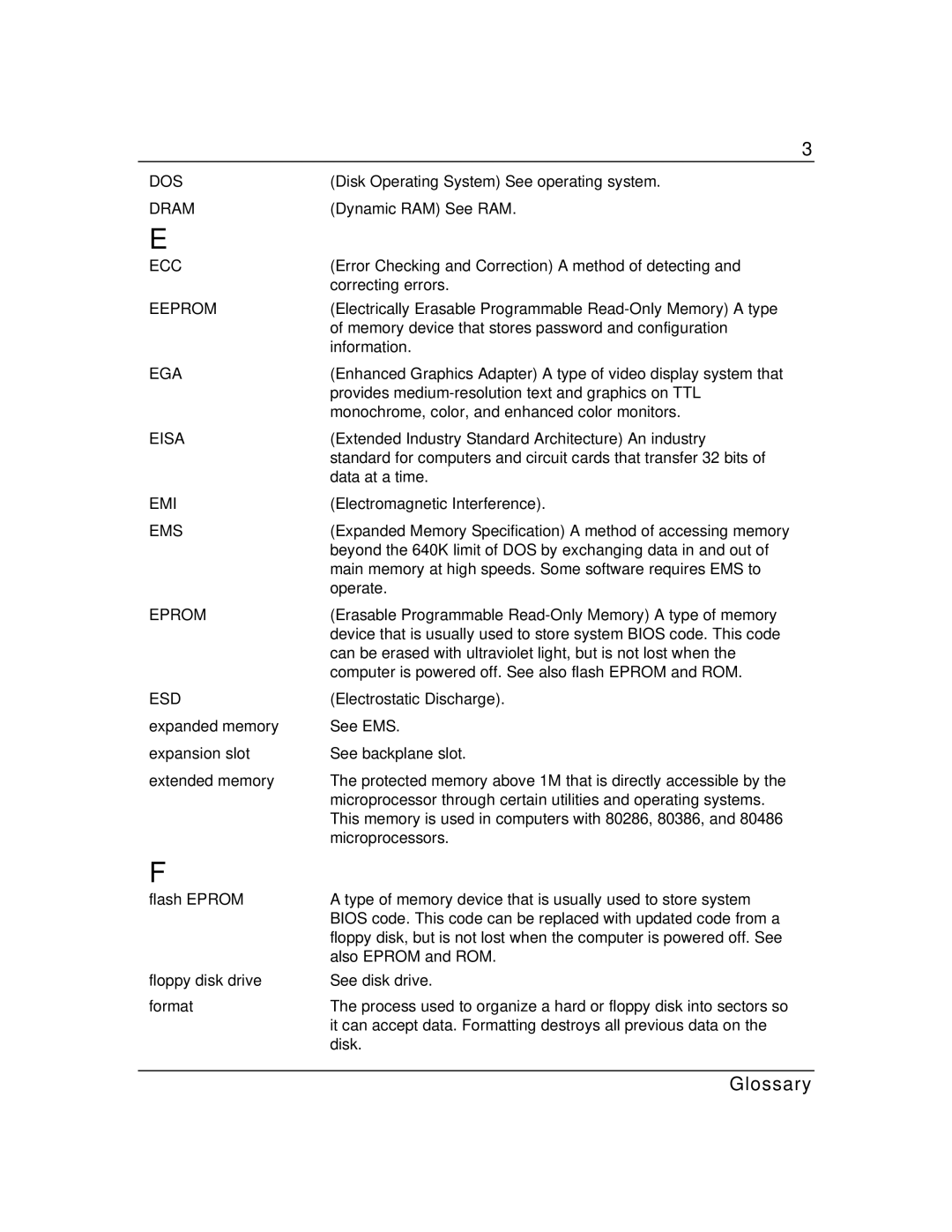
3
DOS | (Disk Operating System) See operating system. |
DRAM | (Dynamic RAM) See RAM. |
E |
|
ECC | (Error Checking and Correction) A method of detecting and |
| correcting errors. |
EEPROM | (Electrically Erasable Programmable |
| of memory device that stores password and configuration |
| information. |
EGA | (Enhanced Graphics Adapter) A type of video display system that |
| provides |
| monochrome, color, and enhanced color monitors. |
EISA | (Extended Industry Standard Architecture) An industry |
| standard for computers and circuit cards that transfer 32 bits of |
| data at a time. |
EMI | (Electromagnetic Interference). |
EMS | (Expanded Memory Specification) A method of accessing memory |
| beyond the 640K limit of DOS by exchanging data in and out of |
| main memory at high speeds. Some software requires EMS to |
| operate. |
EPROM | (Erasable Programmable |
| device that is usually used to store system BIOS code. This code |
| can be erased with ultraviolet light, but is not lost when the |
| computer is powered off. See also flash EPROM and ROM. |
ESD | (Electrostatic Discharge). |
expanded memory | See EMS. |
expansion slot | See backplane slot. |
extended memory | The protected memory above 1M that is directly accessible by the |
| microprocessor through certain utilities and operating systems. |
| This memory is used in computers with 80286, 80386, and 80486 |
| microprocessors. |
F |
|
flash EPROM | A type of memory device that is usually used to store system |
| BIOS code. This code can be replaced with updated code from a |
| floppy disk, but is not lost when the computer is powered off. See |
| also EPROM and ROM. |
floppy disk drive | See disk drive. |
format | The process used to organize a hard or floppy disk into sectors so |
| it can accept data. Formatting destroys all previous data on the |
| disk. |
